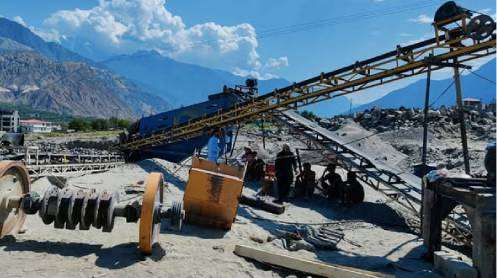ISLAMABAD / GILGIT, October 23, 2025:
Pakistan’s inadequate environmental oversight came under sharp scrutiny on Wednesday as the National Assembly Standing Committee on Climate Change and Environmental Coordination expressed alarm over the country’s outdated emission standards, which remain fixed at Euro-II levels — a benchmark abandoned by most nations over a decade ago.
During the meeting, the committee received a joint briefing from the Ministry of Climate Change and the Islamabad Capital Territory administration, which revealed that Pakistan’s vehicle emission limits and National Environmental Quality Standards (NEQS) continue to align with Euro-II, despite widespread global adoption of Euro-V and Euro-VI standards.
“There is no effective mechanism to monitor emissions or enforce compliance,” said Committee Chairperson MNA Munaza Hassan, calling the situation a “fundamental failure of environmental oversight.”
The committee also learned that the Pakistan Environmental Protection Agency (Pak-EPA) lacks the financial and technical capacity to monitor air quality. Islamabad Deputy Commissioner Irfan Nawaz Memon informed members that the agency has been relying on borrowed testing units from Punjab EPA, while the Capital Development Authority (CDA) financed the purchase of five additional units.
The committee directed the climate ministry to submit a comprehensive, time-bound air-quality improvement plan within four weeks, along with a robust monitoring and enforcement mechanism. It further urged the government to prioritize the climate agenda in international engagements and allocate increased funding to strengthen institutional capacity.
Experts present at the meeting suggested that targeted management actions could reduce air pollution by up to 30 percent, proposing measures such as staggered school and office timings, improved road infrastructure, and installation of catalytic converters for older vehicles. Other recommendations included retrofitting incentives, mandatory emission testing during vehicle transfers, and a transition to Euro-V-compliant fuels.
“We should at least make Islamabad a model city for clean air,” Ms. Hassan concluded.
Senate Panel Urges Enhanced Climate Resilience in Gilgit-Baltistan
Meanwhile, the Senate Standing Committee on Kashmir Affairs, Gilgit-Baltistan (GB) and SAFRON, chaired by Senator Asad Qasim, met in Skardu to review climate impacts, forest protection, and disaster preparedness efforts in one of Pakistan’s most vulnerable regions.
“Gilgit-Baltistan is among the areas most affected by climate change,” said Senator Qasim. “This year, GB experienced severe climate-induced disasters — from glacier melt to glacial-lake outburst floods and cloudbursts — which have devastated communities.”
He emphasized the committee’s commitment to mitigating climate disasters and addressing the challenges faced by local populations. Officials briefed the committee on ongoing forest protection efforts, reporting the seizure of 1.1 million cubic feet of illegal timber, while a plan for its legal utilisation is being finalized.
The committee directed authorities to develop a working plan for forest conservation and introduce incentives for community-led protection initiatives. Officials noted that while residents rely heavily on wood for fuel due to limited electricity access, clean energy projects are being implemented under the Prime Minister’s special directives.
Progress on Early Warning Systems
In a separate session, the Senate panel reviewed progress on the UNDP-funded GLOF-II project and Early Warning Systems in GB and Khyber Pakhtunkhwa (KP).
Project Head Muteeb Ali informed members that 218 out of 292 early-warning stations are fully functional, while 77 face communication issues and civil work is ongoing at 23 sites.
The committee urged full coordination among the GB Disaster Management Authority (GBDMA), district administrations, the Pakistan Meteorological Department, and UNDP to enhance system effectiveness. It also recommended ensuring that all relevant agencies have access to early-warning dashboards for real-time, coordinated disaster response.
Story by Jamal Shahid | Jamil Nagri







